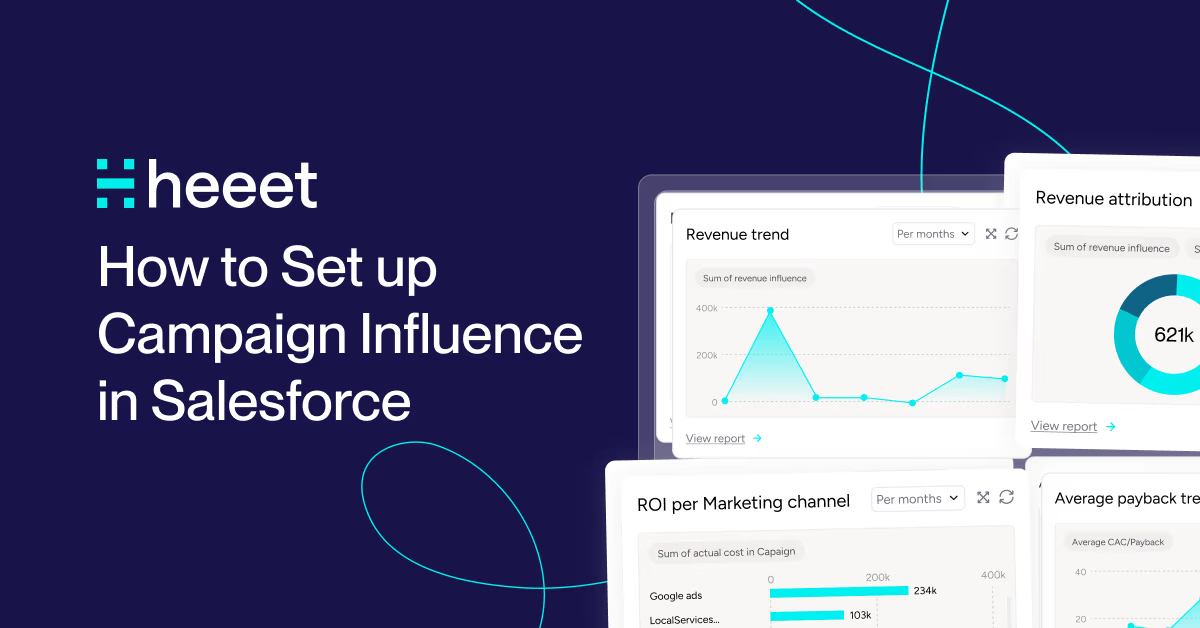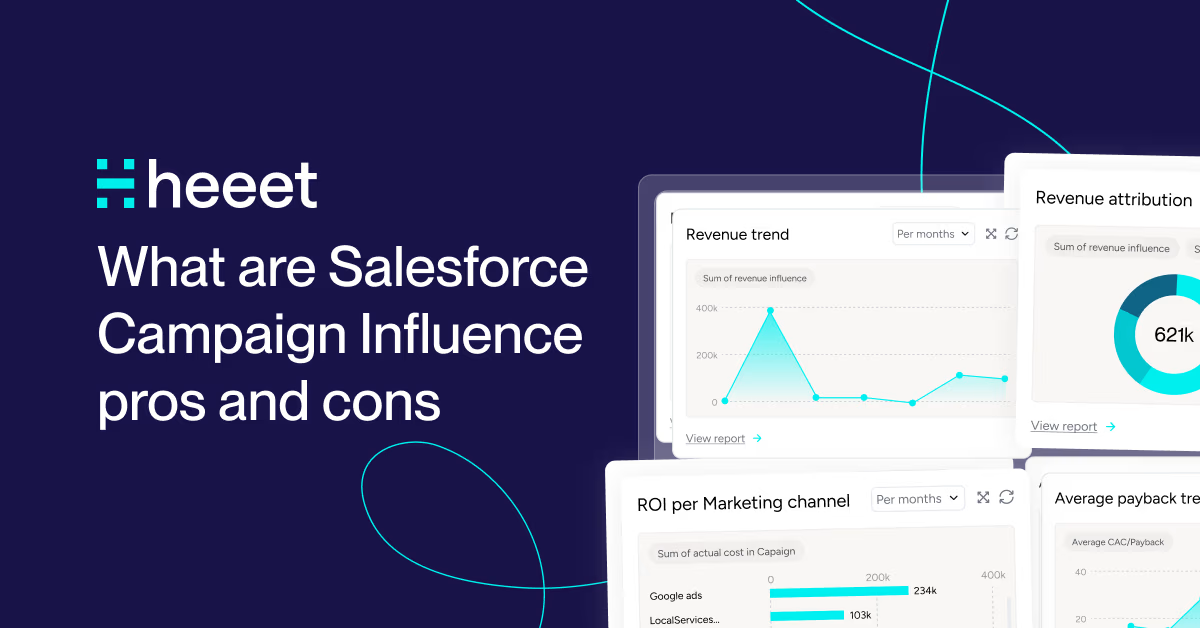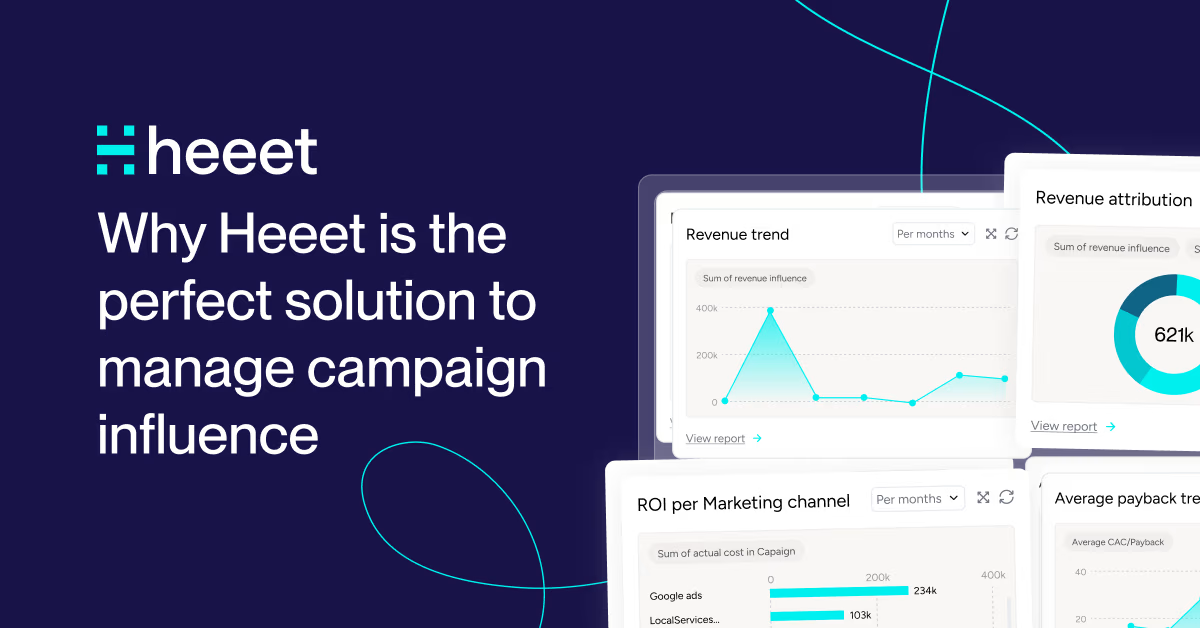Read time :
What is Salesforce Opportunity Influence
Discover Salesforce Opportunity Influence vs Campaign Influence. Learn how Data Cloud powers smarter multi-touch attribution for revenue impact.
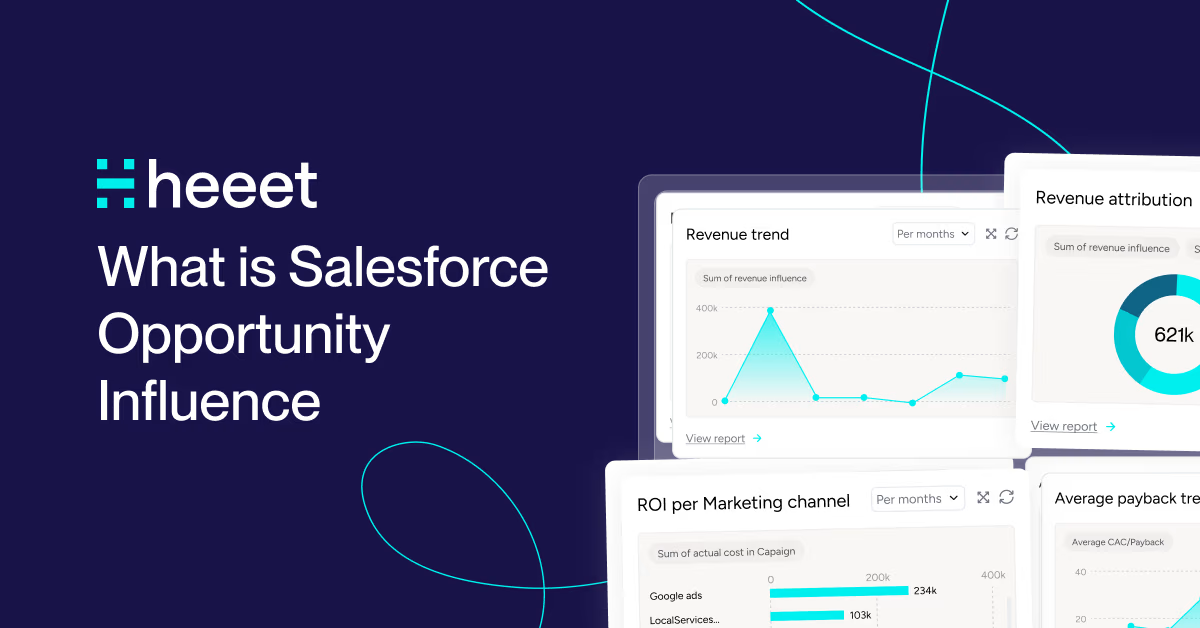

With the recent rollout of Marketing Cloud Core powered by Data Cloud, Salesforce has introduced a new player in the attribution game:
Opportunity Influence. This powerful feature aims to bridge the gap between marketing touchpoints and closed deals, eliminating the manual work associated with traditional campaign tracking.
What Is Opportunity Influence?
Opportunity Influence is Salesforce's answer to the growing demand for smarter, more automated attribution.
Powered by Data Cloud, it consolidates engagement data from multiple marketing channels, including email opens, form submissions, landing page visits, WhatsApp replies, SMS clicks, and more, and directly links them to sales opportunities.
Unlike legacy models, this new framework doesn't require marketers or sales representatives to manually assign a contact to a campaign.
Instead, Opportunity Influence automatically surfaces touchpoints a contact had before an opportunity is created, using data from the unified customer profile stored in Data Cloud.
The result? Marketers can finally receive credit for the activities that nudged a buyer closer to making a purchase, without the need for spreadsheet gymnastics.
Opportunity Influence vs. Campaign Influence: What's the Difference?
At first glance, Opportunity Influence may sound similar to Campaign Influence, but the mechanics of each tool are notably different :
- Campaign Influence relies on a contact being explicitly added to a campaign as a Campaign Member. Salesforce then evaluates all memberships associated with the opportunity's contacts to generate influence records.
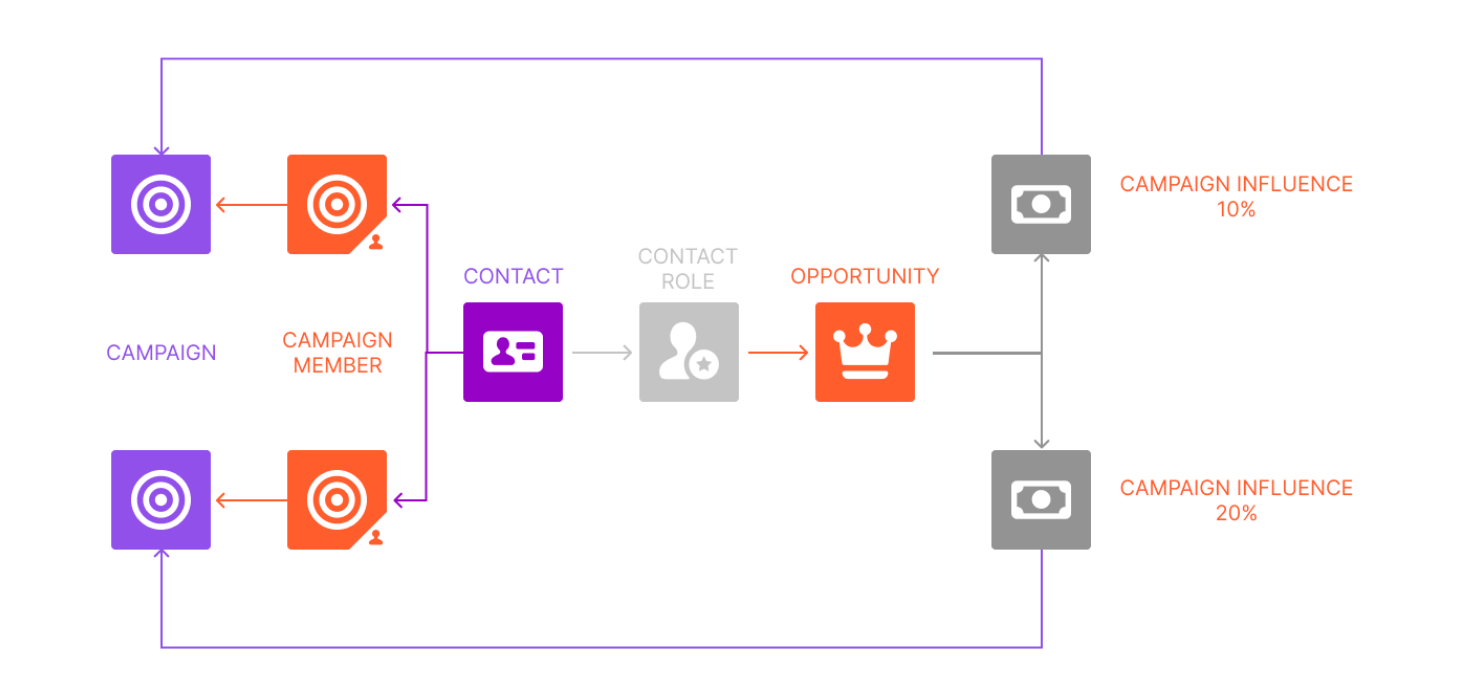
- Opportunity Influence, on the other hand, doesn't require campaign membership at all. It automatically analyzes touchpoints across the Data Cloud to determine which engagements are likely to have influenced the deal, freeing up time and reducing human error.

In short, Opportunity Influence focuses on Marketing Cloud engagement from a contact added as a contact role to an opportunity, offering multi-touch attribution of email, SMS, and landing page interactions. Campaign Influence, on the other hand, focuses on Salesforce Campaigns and Opportunity Contact Roles, utilizing standard/custom models within the Salesforce CRM.
How does Opportunity Influence set up look like
1. Set Up Your Marketing Data
Start by installing and deploying data kits that include the Data Model Objects (DMOs) needed for your marketing assets. These kits provide the structure (objects, fields, and data connections) that power Marketing Cloud. After installation, most data streams deploy automatically, though some may require manual deployment in Data Cloud.
2. Deploy Marketing Cloud Data Streams
Deploying data streams ensures your captured data flows into your marketing tools. While most streams are deployed automatically, updates to marketing ingestion streams must be manually deployed by a Data Cloud admin.
3. Set Up Marketing Channels
Marketing Cloud supports multiple channels, including email, landing pages, SMS, and WhatsApp. Configure each channel's required settings to enable multichannel marketing.
4. Enable Web Tracking
Marketing Cloud uses cookies to track visitor activity on landing pages. Each visitor receives a unique identifier (not personally identifiable). After setup, you can track:
- Page views
- Form submissions
- Link clicks
- Button clicks
5. Activate Marketing Performance
Leverage Data Cloud and Tableau Next to analyze campaign and content performance. Access embedded reports directly in campaign records and view dashboards with trends and insights.
Permissions Required:
- To enable: Data Cloud Admin & Marketing Cloud Admin
- To view dashboards: Tableau Next Included App Business User
6. Attribute Revenue to Campaigns
Use Opportunity Influence in Marketing Cloud to link engagement data to specific campaign revenue. Activities are eligible for attribution from 30 days before an opportunity is created until it is marked Closed/Won. This data supports ROI analysis and helps guide campaign strategy.
Key Steps :
- In Setup, search for and select Opportunity Influence.
- Complete tasks in the Readiness Check.
- Click Enable and choose your attribution models:
- First-touch: Credits the first engaged campaign.
- Last-touch: Credits the last campaign before closing.
Is Opportunity Influence the Attribution Model We've Been Waiting For ?
Opportunity Influence is a significant leap forward, but like all attribution models, it comes with caveats :
- It doesn't capture everything. While email, forms, and other known digital engagements are included, organic traffic (SEO) and paid ad interactions often fall through the cracks unless they're deeply integrated into your Salesforce ecosystem. And even then, Salesforce's out-of-the-box integrations are still limited in this area.
- It still depends on Opportunity Contact Roles. This means if your sales team forgets to add the right contacts to the opportunity, their previous interactions won't be counted, regardless of how influential they were.
- It stops at opportunity creation. Interactions that occur after an opportunity is opened, such as nurturing emails, demos, or retargeting ads, aren't tracked by Opportunity Influence. This can be a significant blind spot in industries with long sales cycles or where multiple decision-makers are involved after the initial engagement.
- It requires an additional license, such as Marketing Cloud Growth or Enterprise Edition, along with Data Cloud credits and potentially Tableau licenses for advanced reporting.
The Bottom Line: Know Your Blind Spots
Whether you're evaluating Opportunity Influence, Campaign Influence, or any other attribution model, it's important to remember that no single method tells the whole story.
Automation helps, but it can't replace strategic oversight. Each model shines a light on part of the journey but leaves some corners in the dark.
If you're looking to fill in those gaps and connect all the dots across SEO, paid ads, content, email, events, and beyond, let's talk.
Heeet offers a quick-to-set-up solution (less than 2 hours) that enables you to:
- Connect your paid platforms with Salesforce (Google Ads, LinkedIn Ads, etc.)
- Automate campaign creation, eliminating manual work
- Track the full multitouch journey of your prospects
- Activate your Salesforce offline conversions in third-party platforms
With Heeet, you'll gain a comprehensive understanding of how each channel contributes to revenue, cost per lead (CPL), customer acquisition cost (CAC), campaign ROI, and the number of interactions required to convert a lead, plus dozens of other advanced marketing insights.

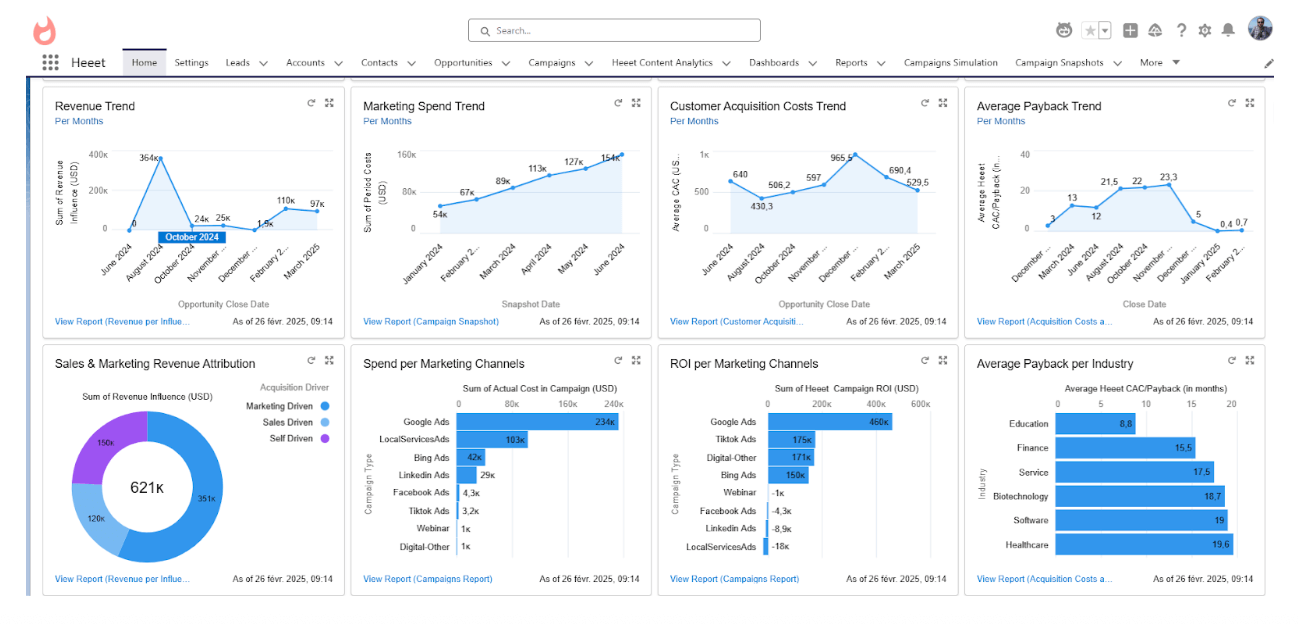
Schedule a call with us at Heeet to learn how our platform surfaces the complete path to revenue, not just the first or last click.
Other articles
.svg)
Ready to track prospects from lead to close with Heeet?
Heeet gives marketers and sales professionals at IT & Security firms turn geuss work intro informed decisions that drive revenue while meeting the same secruity technical standards you provide your clients.




